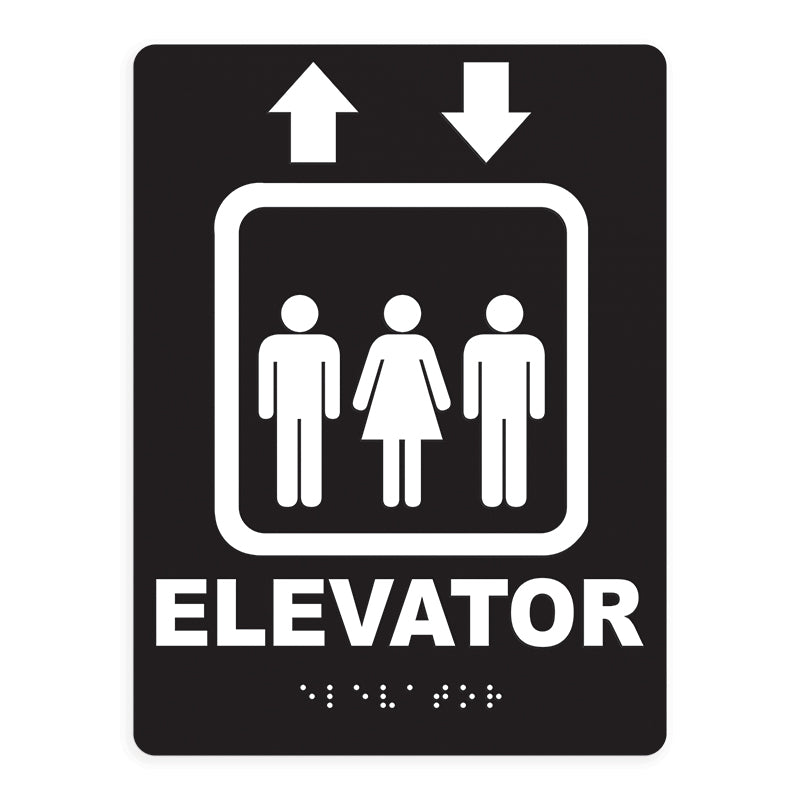Check out the Relevance of ADA Signs in Public Spaces
Check out the Relevance of ADA Signs in Public Spaces
Blog Article
Discovering the Secret Attributes of ADA Indications for Improved Accessibility
In the realm of availability, ADA indicators work as silent yet powerful allies, ensuring that spaces are inclusive and navigable for individuals with disabilities. By integrating Braille and responsive components, these signs damage barriers for the visually impaired, while high-contrast color design and clear fonts deal with diverse visual needs. Furthermore, their calculated placement is not arbitrary however rather a computed effort to facilitate smooth navigating. Yet, beyond these features exists a much deeper narrative about the advancement of inclusivity and the continuous commitment to producing equitable areas. What a lot more could these signs represent in our quest of global accessibility?
Importance of ADA Conformity
Ensuring compliance with the Americans with Disabilities Act (ADA) is crucial for promoting inclusivity and equivalent access in public areas and offices. The ADA, enacted in 1990, mandates that all public facilities, employers, and transport solutions accommodate individuals with specials needs, guaranteeing they take pleasure in the very same civil liberties and opportunities as others. Compliance with ADA standards not just satisfies lawful commitments but also boosts a company's reputation by demonstrating its commitment to diversity and inclusivity.
One of the vital aspects of ADA compliance is the execution of obtainable signs. ADA signs are developed to guarantee that people with specials needs can quickly navigate with areas and buildings.
In addition, adhering to ADA regulations can alleviate the danger of possible fines and lawful repercussions. Organizations that fall short to abide by ADA guidelines might deal with lawsuits or penalties, which can be both financially challenging and damaging to their public photo. Therefore, ADA conformity is essential to cultivating an equitable setting for everyone.
Braille and Tactile Aspects
The consolidation of Braille and responsive components into ADA signage embodies the principles of access and inclusivity. It is generally put underneath the matching message on signs to make certain that people can access the information without aesthetic assistance.
Tactile elements expand past Braille and consist of elevated signs and characters. These components are designed to be discernible by touch, permitting people to determine area numbers, restrooms, leaves, and various other important areas. The ADA establishes details standards relating to the size, spacing, and positioning of these tactile elements to maximize readability and make sure consistency across various environments.

High-Contrast Color Schemes
High-contrast color pattern play a pivotal duty in enhancing the exposure and readability of ADA signs for individuals with aesthetic disabilities. These systems are essential as they make best use of the difference in light reflectance in between text and history, making sure that indications are easily noticeable, also from a distance. The Americans with Disabilities Act (ADA) mandates the usage of certain color contrasts to suit those with limited vision, making it a crucial element of conformity.
The effectiveness of high-contrast colors hinges on their ability to stick out in numerous lighting problems, including dimly lit settings and areas with glare. Generally, dark message on a light background or light message on a dark history is employed to accomplish optimum contrast. For example, black message on a white or yellow background provides a stark visual difference that assists in quick recognition and comprehension.

Legible Fonts and Text Size
When considering the style of ADA signage, the option of legible typefaces and appropriate text size can not be overemphasized. The Americans with Disabilities Act (ADA) mandates that fonts must be sans-serif and not italic, oblique, script, highly decorative, or of uncommon type.
The size of the message also plays a pivotal duty in access. According to ADA standards, the minimum text height need to be 5/8 inch, and it needs to enhance proportionally with seeing range. This is specifically crucial in public areas where signage needs to be reviewed rapidly and accurately. Uniformity in message size adds to a cohesive aesthetic experience, helping individuals in browsing atmospheres efficiently.
Moreover, spacing between lines and letters is integral to clarity. Ample spacing protects against characters from showing up crowded, enhancing readability. By adhering to these criteria, designers can significantly enhance accessibility, making sure that signs serves its designated purpose for all individuals, no matter their aesthetic capabilities.
Efficient Positioning Strategies
Strategic positioning of ADA signage is vital for optimizing accessibility and guaranteeing conformity with legal requirements. Effectively located signs direct people with disabilities efficiently, assisting in navigating in public rooms. Key considerations include closeness, height, and visibility. ADA guidelines state that indicators need to be installed at an elevation in between 48 to 60 inches from the ground to ensure they are within the line of view for both standing and seated people. This typical height array is crucial for inclusivity, allowing wheelchair users and people of differing elevations to accessibility info effortlessly.
Additionally, signs have to be put beside the lock side of doors to enable easy recognition prior to entry. This positioning helps people find rooms and rooms without blockage. In cases where there is no door, indicators must be located on the nearest nearby wall. helpful hints Uniformity in indicator positioning throughout a facility boosts predictability, minimizing confusion and boosting general individual experience.

Conclusion
ADA indicators play an essential role in advertising ease of access by incorporating attributes that attend to the requirements of people with specials needs. These aspects collectively foster an inclusive environment, emphasizing the importance of ADA conformity in making certain equivalent gain access to for all.
In the realm of accessibility, ADA indications offer as silent yet effective allies, making certain that areas are inclusive and navigable for people with specials needs. check my reference The ADA, passed in 1990, mandates that all public facilities, companies, and transport services accommodate people with impairments, ensuring they appreciate the exact same legal rights and chances as others. ADA Signs. ADA signs are made to make sure that individuals with handicaps can quickly browse with areas and structures. ADA guidelines specify that indicators must be mounted at an elevation between 48 to 60 inches from the ground to guarantee they are within the line of sight for both standing and seated people.ADA indications play a vital duty in promoting access by integrating attributes that deal with the requirements of people with impairments
Report this page